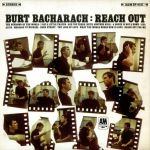 More of the Music of Bad Company
More of the Music of Bad Company
Hot Stamper Pressings of Rock Classics Available Now
This commentary was written in 2009.
In late 2009 we had just finished a shootout for this hard-rockin’ album, our first since January of ’08, and what we were hearing this time around BLEW OUR MINDS. This record got a whole lot better over the course of the last twenty months or so. I’ll go out on a limb here and say that the drum sound on this record is the right up there with the most present, punchy and realistic I have ever heard on record.
I saw a friend’s band play recently in a small club and remember thinking how amazingly punchy the snare sounded (the sound coming from the live instrument itself and the club’s speakers) and this record has that kind of drum sound!.
There’s nothing like live music — everybody knows that — but good copies of this album get you a whole lot closer than I ever expected to get.
It’s a classic case of We Was Wrong. Last time around we wrote “I don’t think you’ll ever find a copy of this album that qualifies as a True Demo Disc, but make no mistake: on the right pressing there’s magic in the grooves.”
We was wrong: It is a true Demo Disc.
On our system anyway. Our stereo is all about playing records like this, and playing them at good loud levels as nature — and the artists — intended.
We revamped our Top 100 List in 2011 and this sucker is now on it, right next to its older brother, the first Bad Company album.
[We have since revamped our list, removing Straight Shooter but leaving the first album. There are so many contenders for our Top 100 that one Bad Company album — out of the two we like — is probably the right number.]
What You Want
It’s got exactly what you want from this brand of straight ahead rock and roll: presence in the vocals; solid, note-like bass; big punchy drums, and the kind of live-in-the-studio energetic, clean and clear sound that Bad Company (and Free before them) practically invented. (AC/DC is another band with that kind of live studio sound. With big speakers and the power to drive them YOU ARE THERE.)
One of the best cuts on side two is the ballad Anna, and boy does it sound good. This track will show you exactly what we mean by “live in the studio” sound. You can just tell they are all playing this one live: it’s so relaxed and natural and REAL sounding.
Turn It Up and Rock Steady!
If you’re playing this copy good and loud, you’ll feel like you’re in the room with the boys as they kick out the jams. Feel Like Makin’ Love rocks like you will not believe — shocking clarity, tons of ambience, silky sweet highs, and a grungy guitar sound that will blow you away. Who gets better tone than Mick Ralphs? Half the sound of Bad Co. is his guitar and the other half is Paul Rodgers voice. Between the two of them they rocked FM radio in the ’70s as good as any band of their time and far better than most. Check out the lineup on side one. Three out of four of those songs are serious Heavy Hitters that you probably know by heart. (If you listen to a Classic Rock station you definitely know these songs by heart.)
Cleaning
We used to think that “the biggest problem with the average copy of this record was GRIT and GRAIN, no doubt caused mostly by the bad vinyl of the day. You have to suffer through a lot of dry, flat, grainy copies in order to find one that sounds like this.”
That was not our experience this time around. Our Odyssey record cleaning machine, Walker fluids and tons of interim tweaks have taken most of that grain and grunge our of the sound of the records we played. (Uncleaned or improperly cleaned records are a major cause of Old School sound. There really is no hi-fidelity without the use of these revolutionary cleaning methods.)
Engineering
This album was one of Ron Nevison’s first big engineering jobs. He also did Bad Company’s debut, a Top 100 album for us. In 1977 he worked on the sprawling mess that turned into Physical Graffitti.
He went on to do lots of the biggest selling monster rock albums of the ’80s, but The ’80s Sound has never held much appeal for us, which is of course why you find so few recordings from that era on our site, silk purses, sow’s ears and all that.
(more…)










